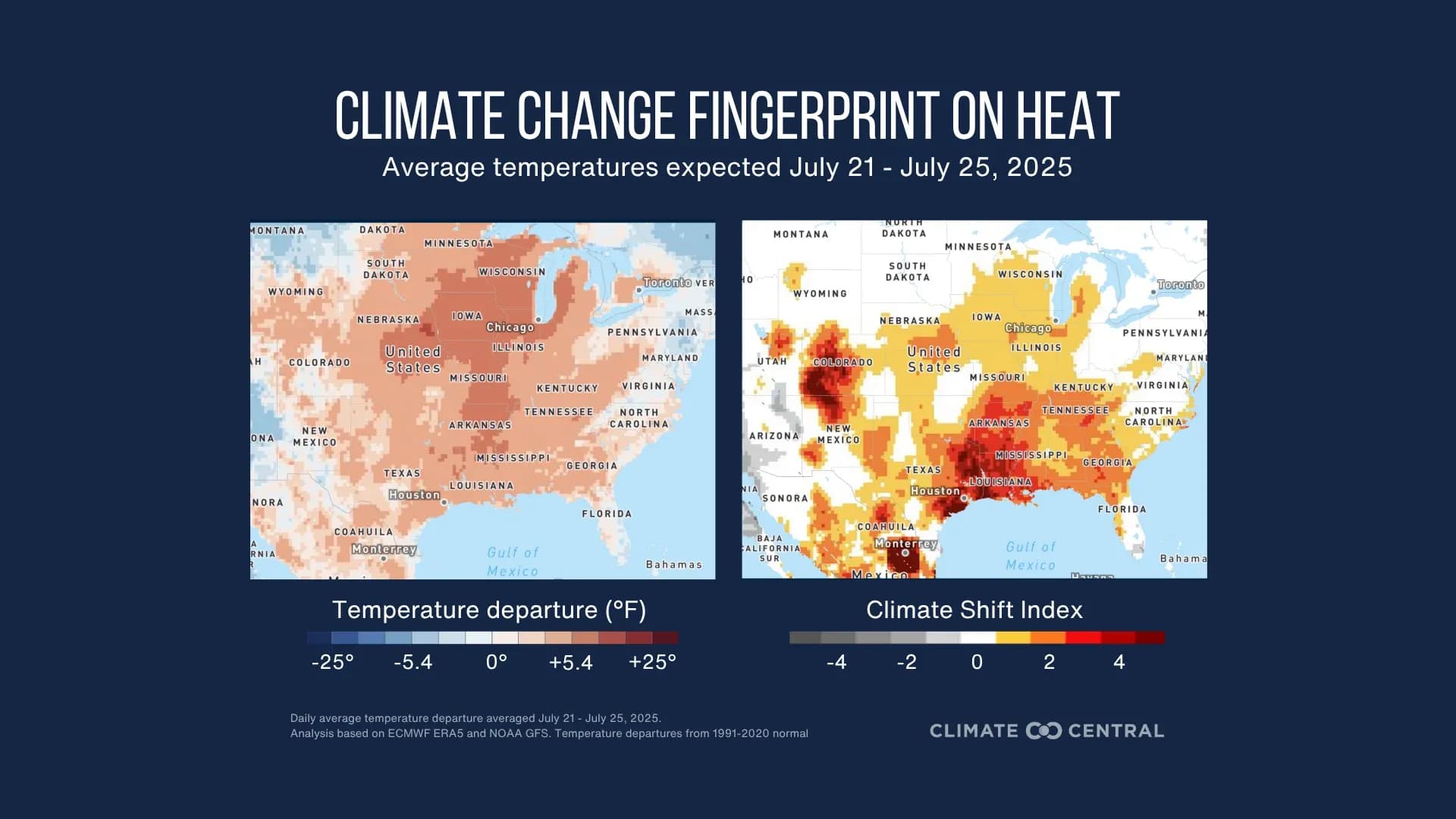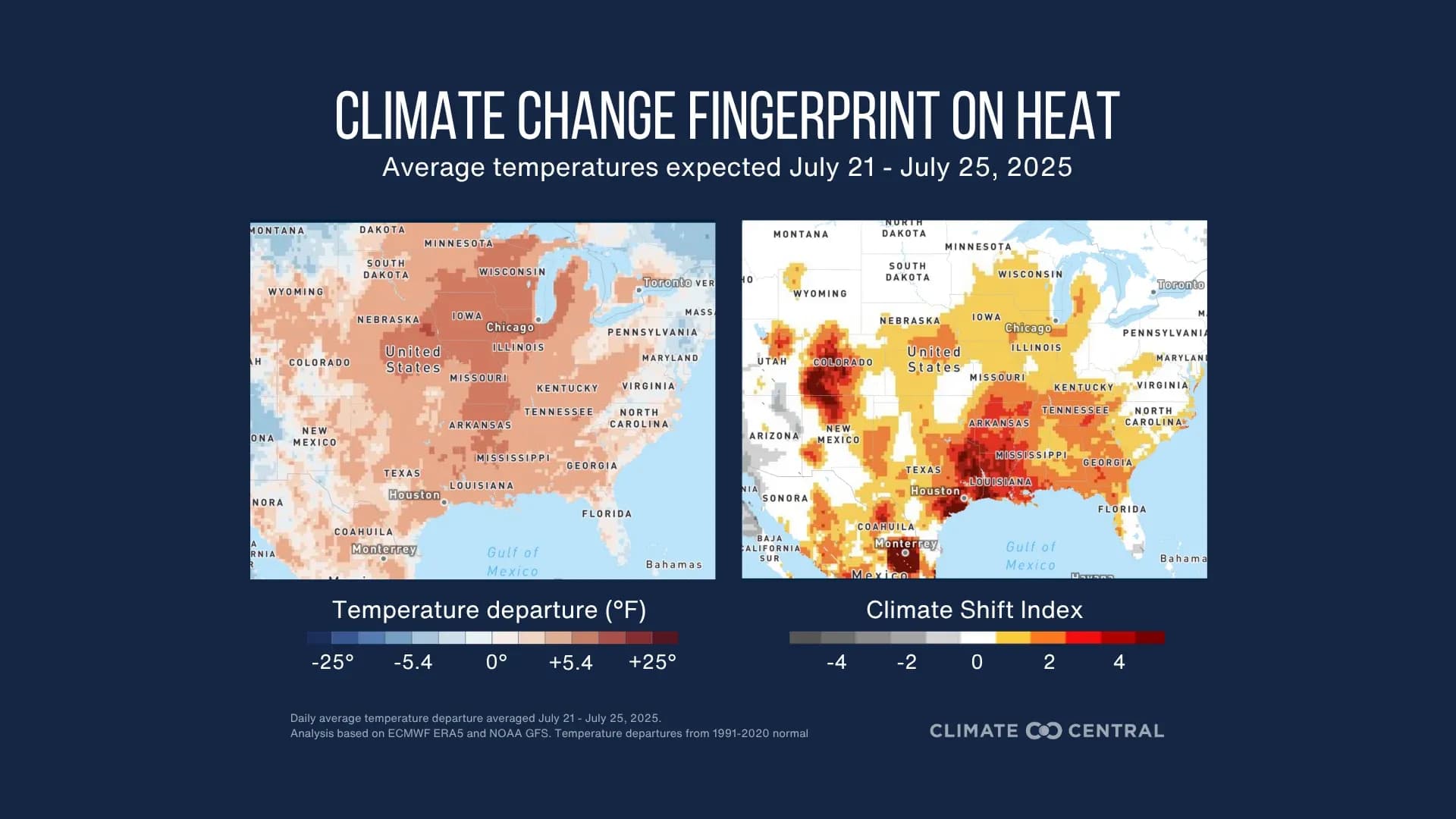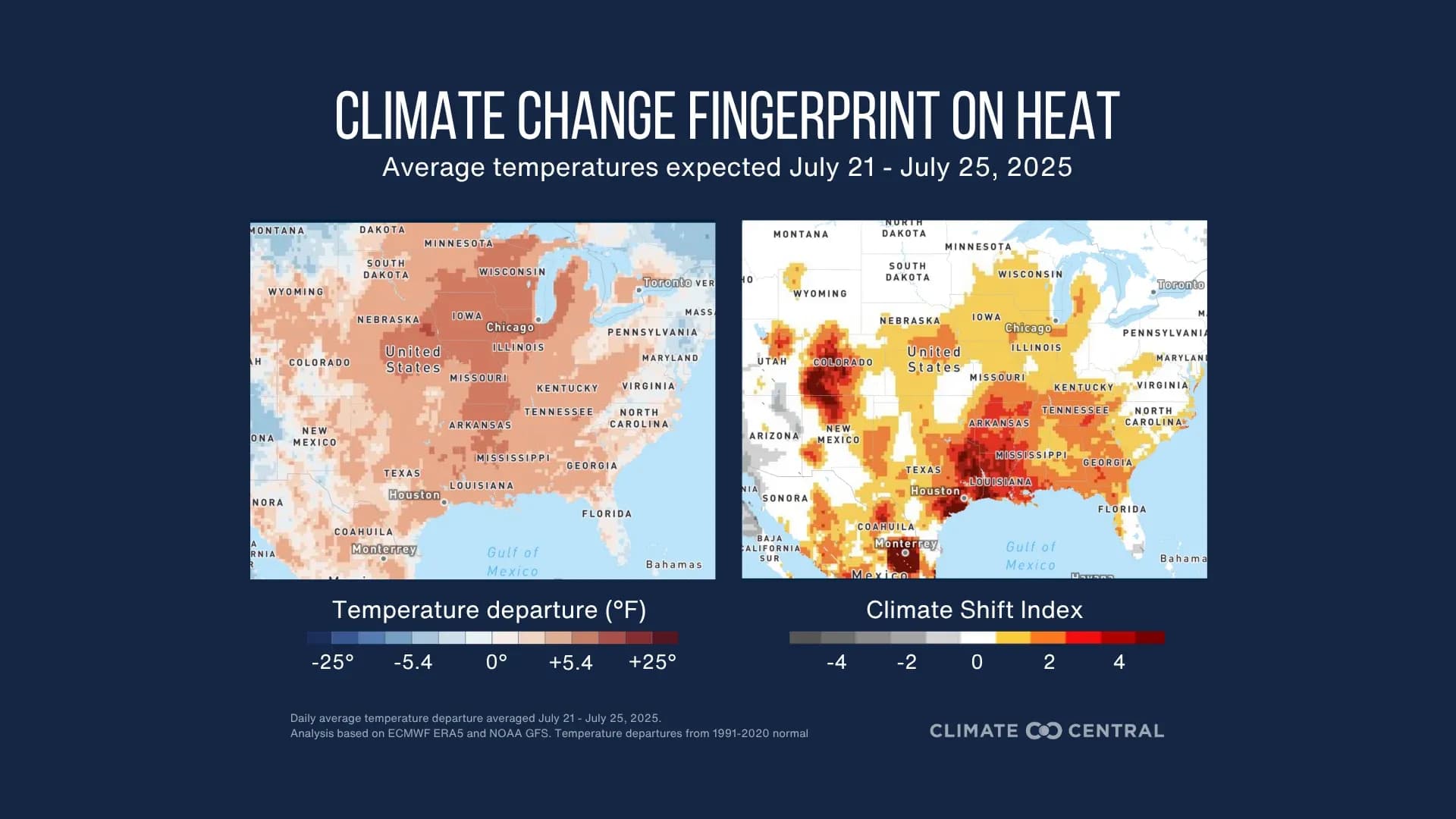Unpacking Summer's Fiery Future: How Climate Change Rewrites the Rules of Heat
Unpack how human-caused climate change intensifies extreme summer heat. Explore heat domes, the Climate Shift Index, and what amplified temperatures mean for us all.
Summer's Unrelenting Grip: The Current Reality
As July settles in, a vast expanse of the finds itself wrestling with a relentless, unyielding heat. From July 21 to 25, a prolonged stretch of unusually hot, humid conditions is forecast to expand its reach, beginning in the Southeast and pushing into the Mid-South before enveloping the Midwest. This isn't just a typical midsummer sizzle; it's an event of significant scale, poised to impact nearly 160 million people – almost half the nation's population. Forecasts show triple-digit highs baking parts of , , , northern , , and for multiple days. Even the lower Midwest and Northeast could see temperatures soaring into the mid-to-upper 90s. The oppressive humidity will only amplify the misery, particularly across the Central Plains, Midwest, and the Mississippi and Ohio valleys, where heat index values could easily climb into the perilous 105°F to 110°F range. This entire sweltering pattern is anchored by a formidable weather phenomenon: a , relentlessly funneling hot, humid air across the country.
Beyond the Thermometer: Decoding Climate's Fingerprint
What makes this particular heat wave stand apart from summers past isn't just its intensity, but its undeniable connection to . Thanks to cutting-edge attribution science, specifically tools like the , we can now quantify this influence with remarkable precision. A analysis reveals that human activity has made this excessive heat at least three times more likely for the 160 million Americans caught in its grip. For many areas, including wide swaths from and to and , CSI levels are hitting 5 – the highest possible, indicating this extreme heat is at least five times more probable due to climate change. As , VP of Science at Climate Central, aptly puts it, "This is not your grandmother’s heat wave." While July has always been hot, climate change is making these events significantly hotter and, by extension, far more dangerous than anything we've experienced before. This isn't speculation; it's a conclusion drawn from peer-reviewed methodology and real-time data, painting a clear picture of our climate-altered reality.
The Invisible Dangers: Why This Heat Hits Differently
Beyond the glaring triple-digit daytime temperatures and suffocating humidity, the true peril of these contemporary heat waves often lies in what happens after the sun sets. The anchoring heat dome doesn't just push daytime highs; it also traps warmth, preventing the crucial overnight cooling that our bodies desperately need to recover. Forecasts show unusually warm overnight lows, ranging from the mid-70s to low 80s across states like , , , , , , , , and . These minimum temperatures are a staggering 5°F to 15°F above average for this time of year, threatening to break record high minimums. When nights remain sweltering, the human body struggles to dissipate heat, leading to cumulative stress that significantly increases the risk of heat-related illnesses like cramps, exhaustion, and potentially fatal heatstroke. This lack of respite, combined with the extreme heat index values reaching 105°F to 110°F during the day, transforms what might seem like a 'normal' hot spell into a profoundly more dangerous event, hitting communities differently and demanding heightened vigilance.
Adapting to a Shifting Climate: What Lies Ahead
The current heat wave, undeniably amplified by , serves as a stark preview of our summer future. The rules of heat, as we once understood them, are being fundamentally rewritten. This isn't a temporary anomaly but a trend, signaling that such intense and prolonged heat events will likely become more frequent and severe. Understanding this new normal requires a shift in perspective, moving beyond simply reporting daily temperatures to grasping the underlying climatic forces at play. For individuals and communities, this means proactive adaptation is no longer optional. It compels us to re-evaluate our infrastructure, public health strategies, and even our daily routines. From investing in green spaces that offer natural cooling to ensuring access to cooling centers and implementing robust early warning systems, our resilience in the face of a hotter climate hinges on informed action. The insights provided by attribution science, like the , are not just academic; they are vital tools empowering us to prepare for and respond to a future where 'summer' means something fundamentally different than it did for previous generations.
Related Articles

The Enduring Burn: Unmasking Climate's Mark on America's Hottest Days

The Enduring Burn: Unmasking Climate's Mark on America's Hottest Days

The Climate Crucible: Unpacking the New Era of Extreme Summer Heat

The Climate Crucible: Unpacking the New Era of Extreme Summer Heat

The Invisible Shift: When Summer's Embrace Becomes a Harsh Grip

The Invisible Shift: When Summer's Embrace Becomes a Harsh Grip

Beyond the Thermometer: Unpacking Our New Era of Extreme Heat
